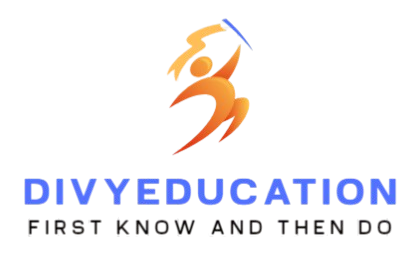Primary Teacher
What is a Primary Teacher?
A Primary Teacher is an educator who is responsible for teaching young children, typically from ages 3 to 12, in primary or elementary schools. Their role includes fostering the academic, social, and emotional development of children by teaching foundational subjects such as math, reading, writing, and science. They create a safe and engaging environment to help students develop basic knowledge and skills.
Education Eligibility
To become a primary teacher, the following educational qualifications are generally required:
- Bachelor’s Degree in Education (B.Ed.) or a Diploma in Elementary Education (D.El.Ed.) is usually mandatory after completing a Bachelor’s degree.
- For some schools: A higher education qualification, such as a Master’s in Education (M.Ed.), may be beneficial.
- 12th Grade: Some institutions may require a minimum percentage in high school (usually in the range of 50-60% or more) to be eligible for the B.Ed. course.
Handicapped Eligibility
In many countries, there are special provisions for individuals with disabilities (handicapped) to become primary teachers. These provisions can include:
- Relaxed educational qualifications or marks.
- Special allowances in the entrance exam.
- Access to special training programs for handicapped individuals who want to become primary teachers.
Specific eligibility criteria may vary depending on the country and the institution offering the teacher training program.
Admission Process
The process to become a primary teacher typically involves these steps:
- Educational Qualifications: Complete a high school diploma or equivalent.
- Entrance Exam: Apply for and clear the entrance exam for a teacher training program (e.g., B.Ed. or D.El.Ed.).
- Teacher Training: Enroll in a teacher training program that includes both coursework and practical teaching experience (internship).
- Certification/License: In some countries, a certification exam or registration with a professional teaching body is required after completing the training.
- Job Application: Apply for teaching positions in schools (government or private).
Entrance Exam
Most countries and universities have an entrance exam for candidates wishing to enroll in teacher training programs. Some common examples include:
- CTET (Central Teacher Eligibility Test) in India.
- TET (Teacher Eligibility Test) in several states and countries.
- State-level entrance exams for B.Ed. courses.
These exams test knowledge of subjects such as English, Math, Science, and educational psychology, and assess teaching aptitude.
Colleges and Universities
Primary teacher training is available in numerous colleges and universities worldwide. Some well-known institutions offering B.Ed. or similar programs include:
- In India: Delhi University, Banaras Hindu University, Jamia Millia Islamia, IGNOU.
- In the USA: Harvard University, Stanford University, University of California.
- In the UK: University of Oxford, University of Cambridge, University College London.
You can pursue these courses both in public and private universities.
Scholarship
There are various scholarships available for aspiring teachers, such as:
- Government Scholarships: Many governments offer scholarships for students pursuing B.Ed. or similar courses.
- Private Scholarships: Some non-governmental organizations and universities offer scholarships to students based on merit or need.
- Disability Scholarships: Special scholarships are available for students with disabilities pursuing teacher training.
You can check with the specific institution, government, or private scholarship portals for more details.
Primary Teacher Time and Expenses
- Time: A primary teacher’s working hours generally consist of 6-8 hours per day in school, with additional hours for lesson planning, grading, and professional development.
- Expenses: The main costs involved are:
- Tuition Fees for teacher education programs.
- Books and Study Materials.
- Exam Fees for certification exams.
- Travel and Accommodation if attending an out-of-town institution.
Some of these expenses may be covered by scholarships, loans, or government schemes.
Average Income
The average salary of a primary teacher varies based on location, type of school, and experience:
- In India: The average monthly salary ranges from ₹20,000 to ₹40,000 for government school teachers, and higher for private schools.
- In the USA: The average annual salary for primary teachers is about $50,000 to $60,000.
- In the UK: The salary for primary teachers typically ranges from £23,000 to £40,000 per year.
Salaries can be higher with experience, further qualifications, or special roles within the education system.
Growth in Career
A career as a primary teacher can offer significant growth opportunities:
- Teaching Hierarchy: You can advance to roles such as Senior Teacher, Head of Department, or Principal.
- Specialization: Specializing in areas such as special education, music, sports, or psychology can open new career paths.
- Higher Education: With further studies (e.g., M.Ed., Ph.D.), you could become a trainer or academic leader in teacher education.
Many teachers also choose to work in school administration, curriculum development, or educational consulting.
Specialist
A primary teacher can specialize in various fields:
- Special Education: Working with children who have physical or learning disabilities.
- Montessori Teaching: Specializing in the Montessori method for early childhood education.
- Subject-Specific Teacher: Specializing in teaching specific subjects like math, science, or arts at the primary level.
- Psychological Support: Specializing in children’s mental health and emotional development in the classroom.
Scope in Government and Private Sectors
- Government Sector: Primary teachers in government schools typically have job security, pension plans, and other benefits. The government frequently holds exams (such as CTET) to hire qualified teachers.
- Private Sector: Private schools often offer higher salaries and better resources but might have less job security. However, they may provide opportunities for creativity in teaching methods and curriculum design.
Both sectors offer strong career prospects, but government positions often have more stable long-term benefits.
Special Eligibility for a Person
For certain categories, such as disabled persons or reserved categories (e.g., SC/ST in India), there might be specific eligibility requirements or relaxations in exams and qualifications. This includes:
- Reduced qualification thresholds.
- Reserved seats in teacher training courses.
- Additional time allowances in exams.
These are meant to encourage diversity and inclusion in the teaching profession.
What Work Will I Have to Do at My Workplace?
As a primary teacher, your job will include:
- Teaching Lessons: Plan and deliver lessons to students in various subjects.
- Classroom Management: Ensure that students behave appropriately and create an engaging learning environment.
- Assessing Students: Regularly assess student progress through tests, assignments, and one-on-one meetings.
- Parent Communication: Interact with parents to discuss their children’s progress, behavior, and development.
- Administrative Tasks: Prepare reports, attend meetings, and participate in school events.
- Professional Development: Keep up with new teaching methods, attend workshops, and improve your skills.
Your role will involve a combination of teaching, mentoring, and administrative duties, with a strong focus on fostering the growth of young learners.

